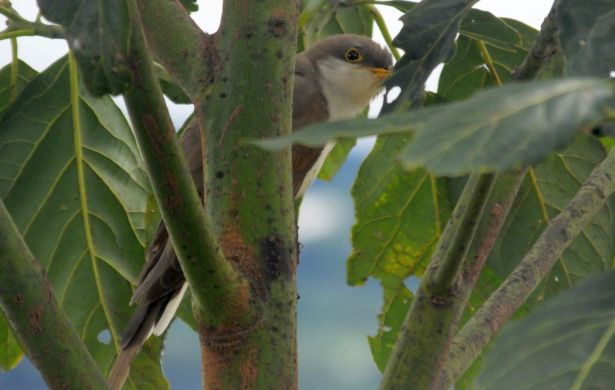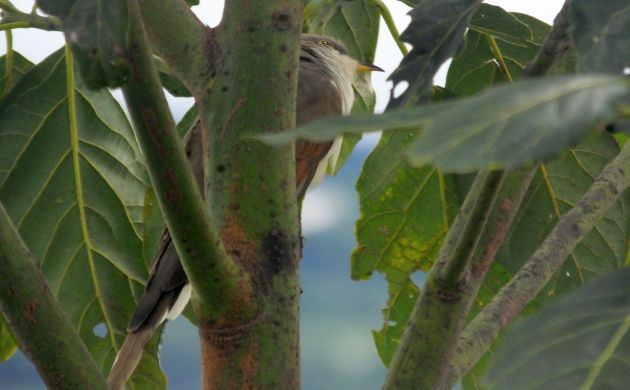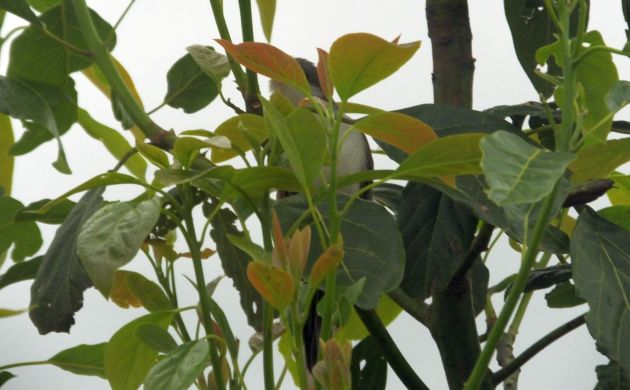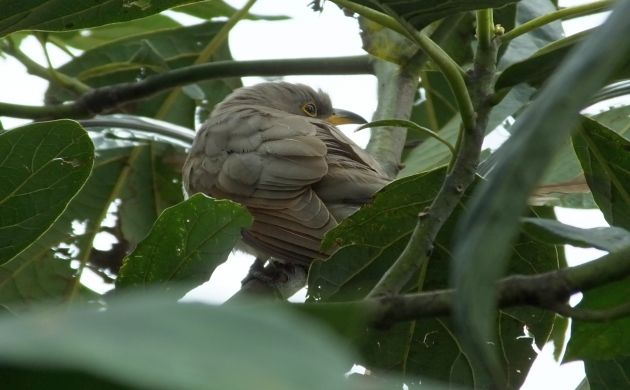
Snow has touched down in some places up north, up there on the breeding grounds of Mourning Warblers, Baltimore Orioles, and Sharp-shinned Hawks. Although some of the tougher Sharpies stayed behind to risk stalking Black-capped Chickadees and Blue Jays in a winter landscape, millions of orioles, grosbeaks, and wood-warblers with a strong instinct for survival flew the coup back in September. A lot of them came down to Costa Rica, especially the orioles. Go birding almost anywhere in this snow-less land from now until March and you would be hard-pressed to pass a day without at least hearing the chattering of Baltimore Orioles. It’s a welcome sound of “winter” in Costa Rica along with the chipping of Yellow Warblers, steady appearance of Chestnut-sided Warblers, and ticking notes of Tennessees. Once in a while, I hear these and other species in my tiny backyard, a piece of green space so small that I feel like I would be lying if I referred to it as a patch. It’s more like a “bit” that is composed of exactly one avocado tree, a couple of papaya plants, a dense patch of ornamental bananas, a short lime tree, and a few bushes.

The backyard green bit, avocado tree on the left.
There is no corridor to other bits of green space, and cement walls surround the houses but some birds still make it to my backyard from a much larger area of shade coffee a few blocks up the road. This past Saturday, three orioles decided to fly in and pay a visit to the avocado. Their chattering calls got me out of bed and eventually urged me to take a look. I’m glad that they insisted because they weren’t the only bird in the backyard. While watching the orioles move in and out of the patchwork of foliage and white sky, another, much more quiet and sneaky species popped into view.

Long tail….white below….yes (!), a Yellow-billed Cuckoo!
I ran for my camera, and fortunately, this decidedly uncommon and reclusive migrant stayed in the tree long enough to get a few shots. It peered around the branches and leaves, no doubt looking for larvae as it hopped down one branch to the next like taking steps on a natural ladder. Eventually, it hopped into a bush where it promptly disappeared, and, as testament to the sneaky skills of cuckoos, I never even saw it flight out. I could hardly believe it. I had missed this year bird in spring and fall at migrant hot spots, had kept my mind and eyes on cuckoos while driving my daughter to and from school just hoping that one would fly across my field of view. I had spent a fair amount of time listening to the night sky, trying to filter out barking dogs, the annoying rumble of trucks and motorcycles, and even the faint sounds of “The Simpsons” from neighborhood televisions with the hope of catching a calling cuckoo zipping overhead. Listening for migrants did pay off with a few nice year birds, but I have yet to hear a cuckoo. I still have faint hopes of hearing a calling Black-billed, but thanks to senor serendipity, no longer need to be concerned with adding the Yellow-billed for 2016.

Can you find the cuckoo?
I knew it was always possible but never expected one to appear in that lone backyard tree when I least expected! I’m glad we planted that pit from an avocado fruit we had eaten. I am happy that it survived, germinated, and grew into a tree that Miranda and I call, “Leafy”. I am grateful that a Yellow-billed Cuckoo on its way to the Amazon decided to check the tree for food. I hope it found some, and I hope it comes back. If I could put some tent caterpillars out there in the backyard, I would!
I wish I could ask it where it came from. Did it nest in some remnant riparian zone in the west or did it swoop between forest patches in southern Illinois? Did it stop off in Mexico, Honduras, or Florida? Fly over the lights of cities in the east? Was it accompanied by the calls of thrushes, warblers, tanagers, and other cuckoos as it flew through the night? Was this its first year making this trip? How does it disappear right in front of one’s eyes?

I wish it well, I hope it avoids the coils of snakes and talons of forest-falcons in the Amazon. I hope to see it again.













What a lucky avocado tree! Even if you never eat the fruit yourself the tree has served a great purpose in your little bit of green! 🙂
Man, I still don’t have a cuckoo for my yard list. Then again, I don’t have a yard.
But, still, that’s an impressive sighting for such a tiny bit of habitat!
I don’t have a backyard in my apartment here in Panama City, Panama… but every morning I check the patch of trees in front of my balcony… it produced my life Black-billed Cuckoo last September 30th! Every green patch is important for these guys!